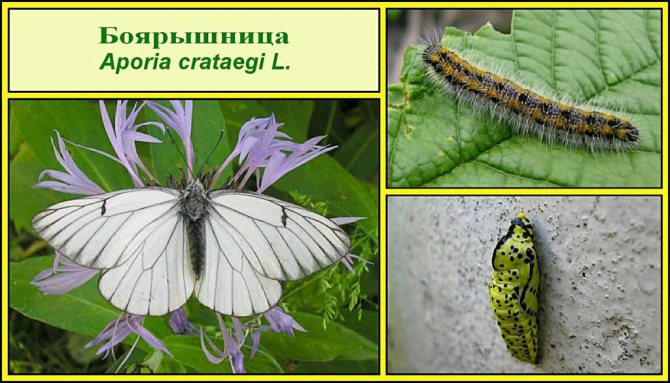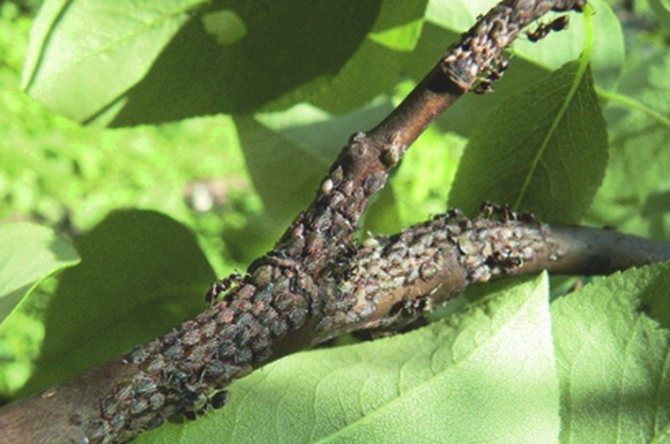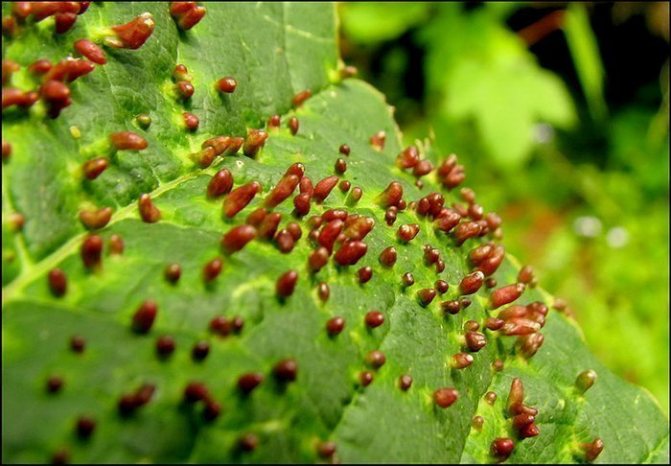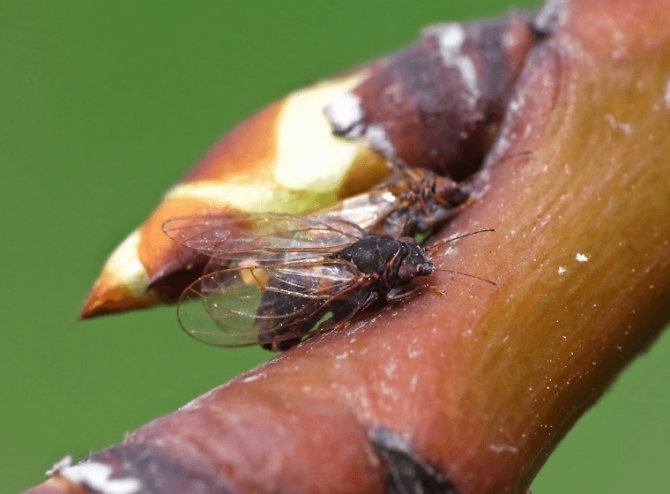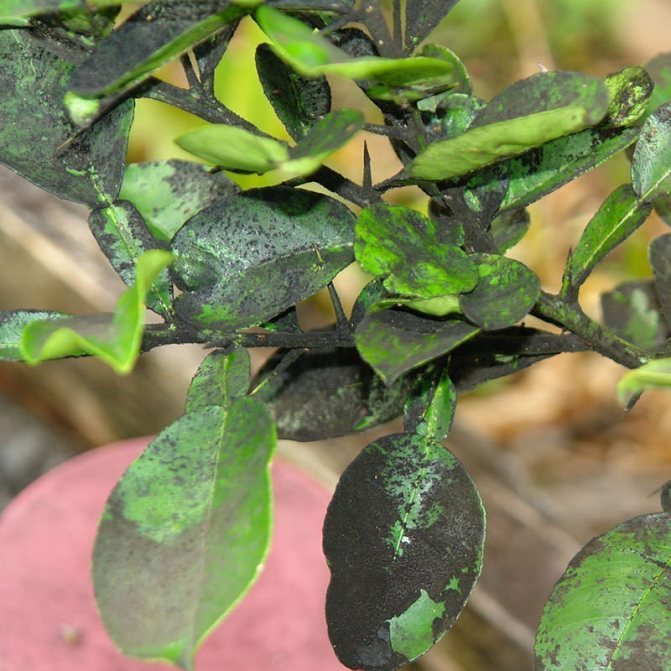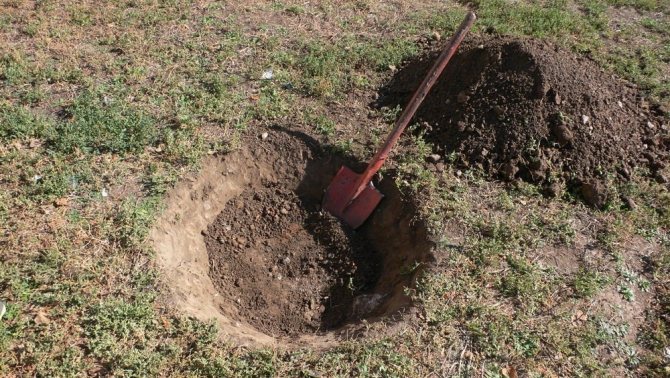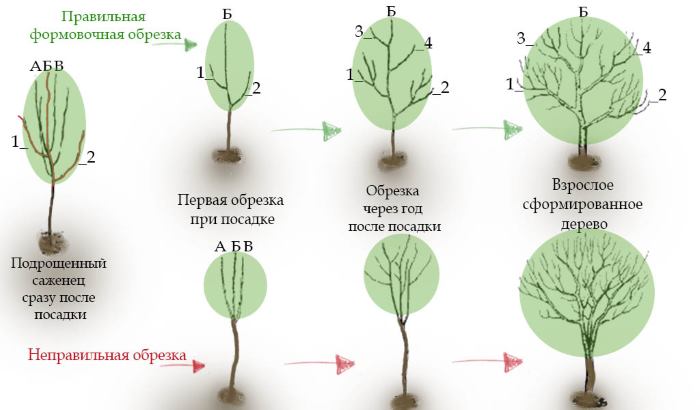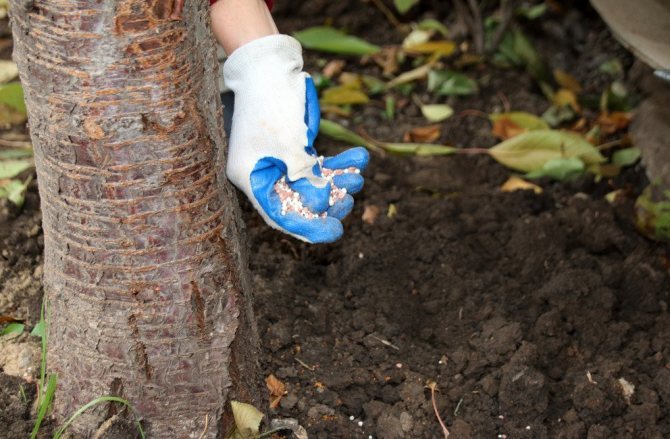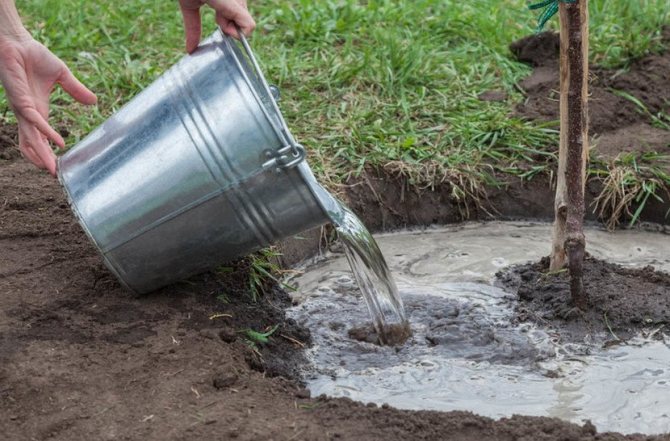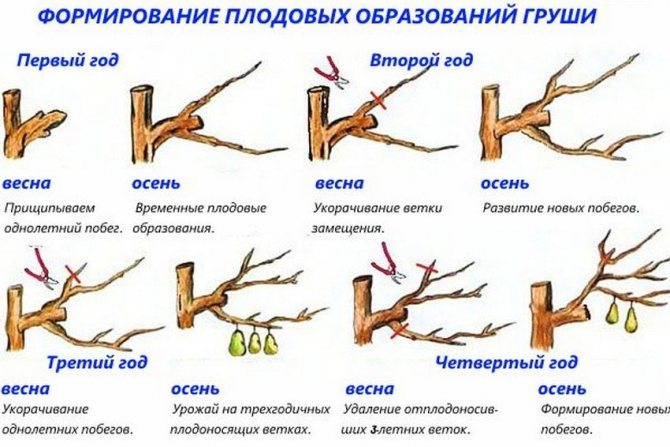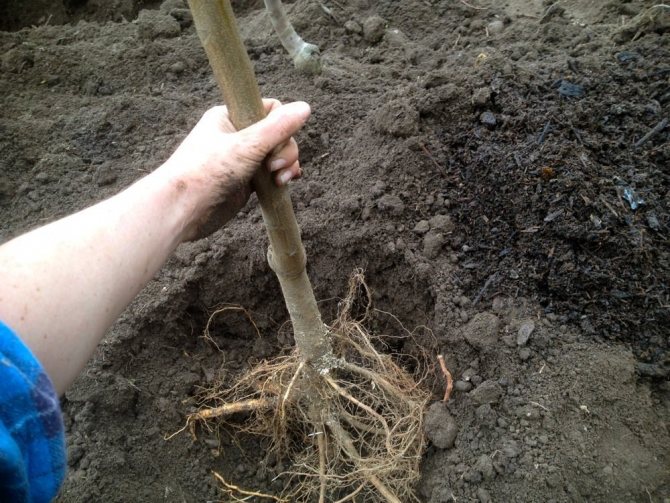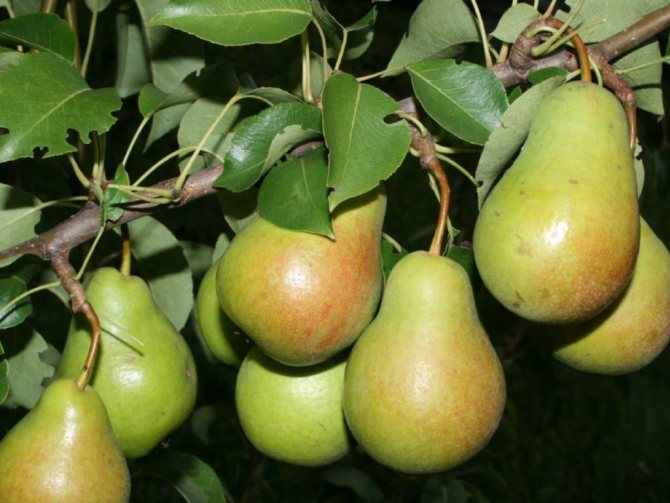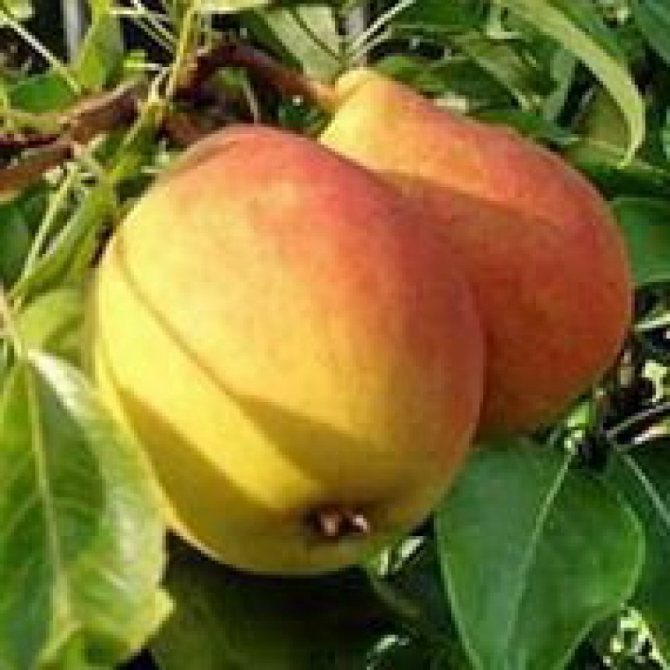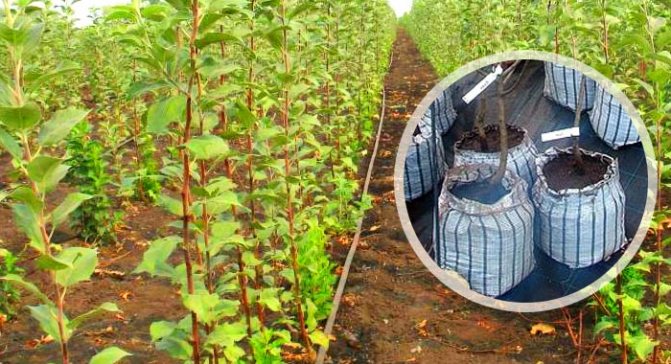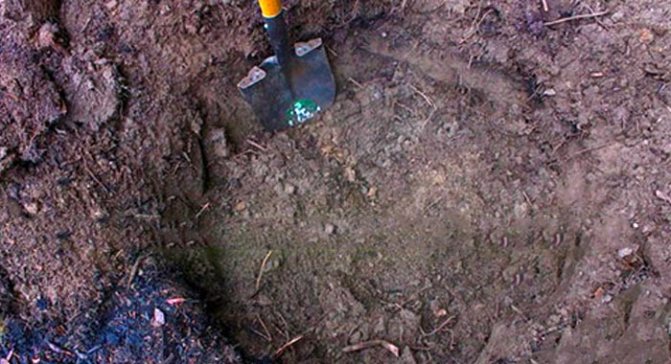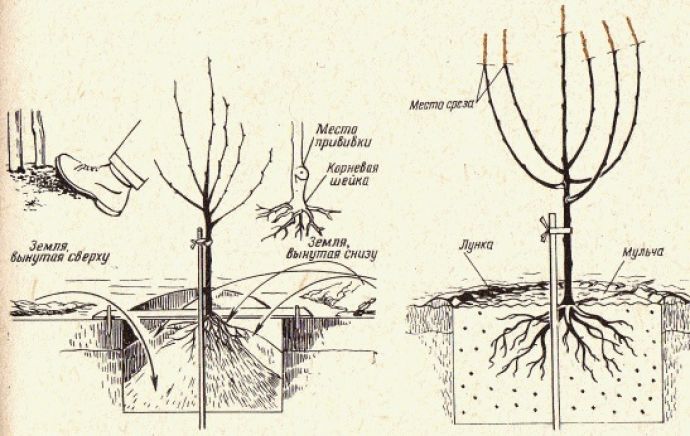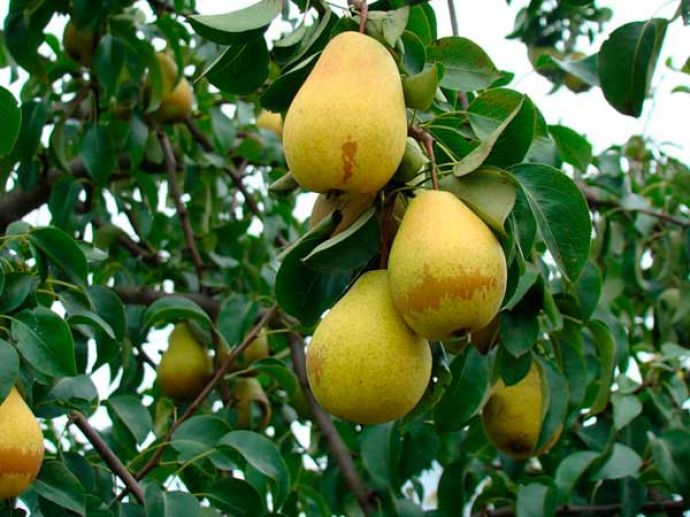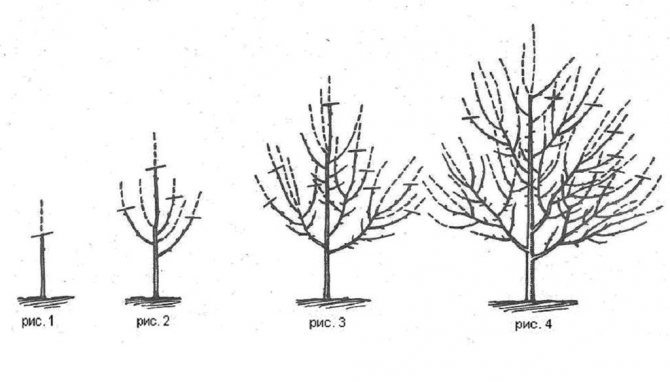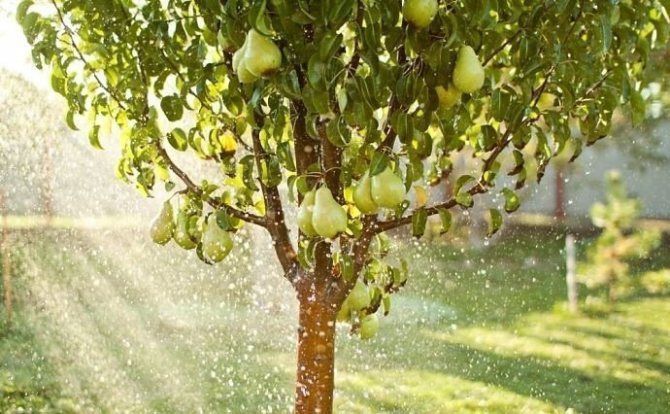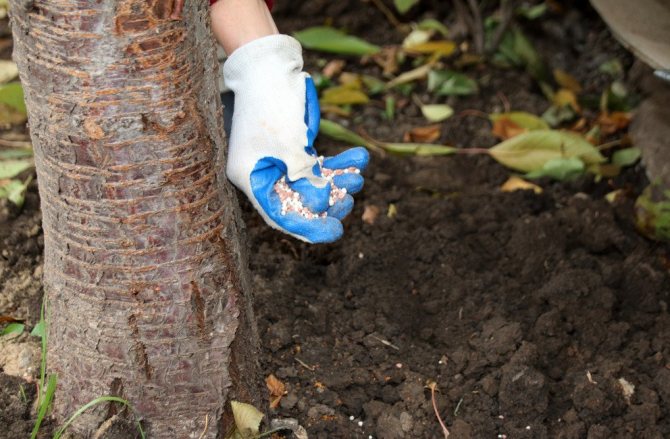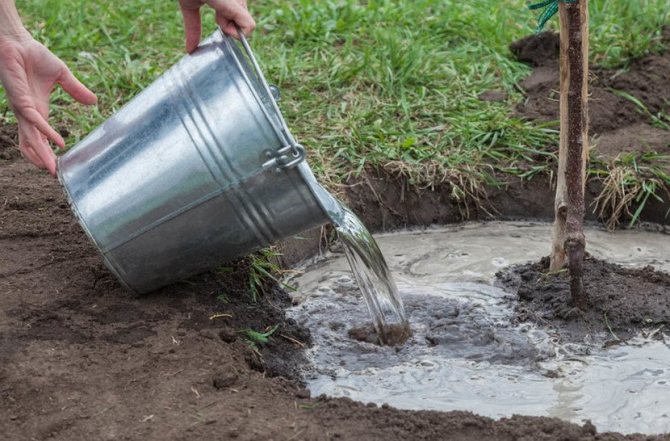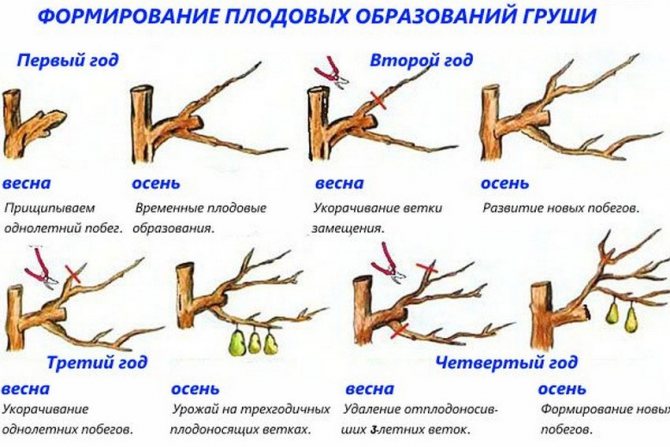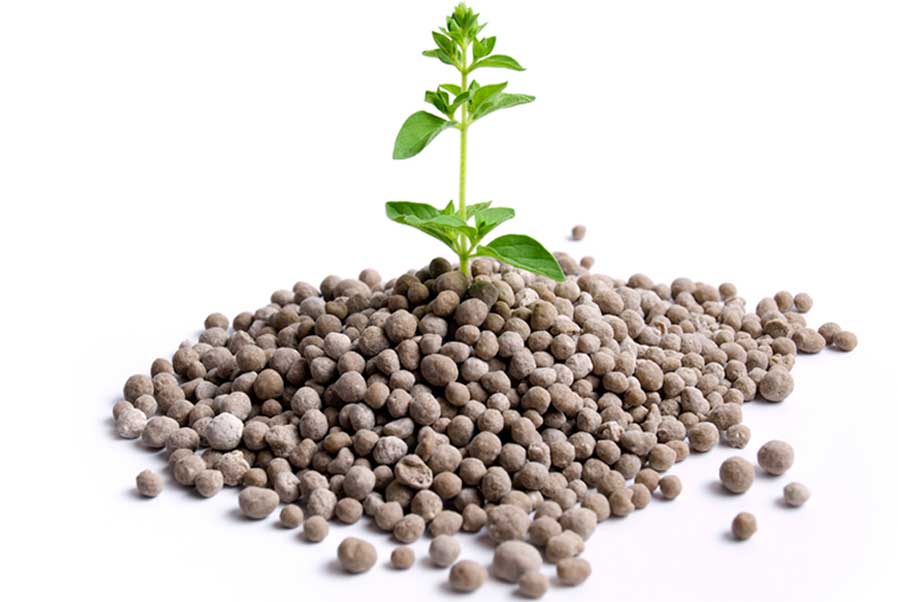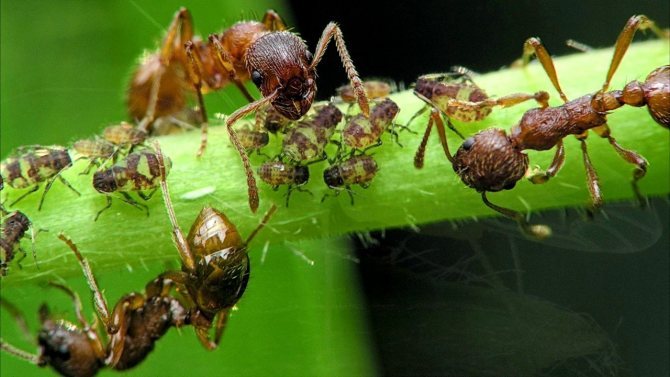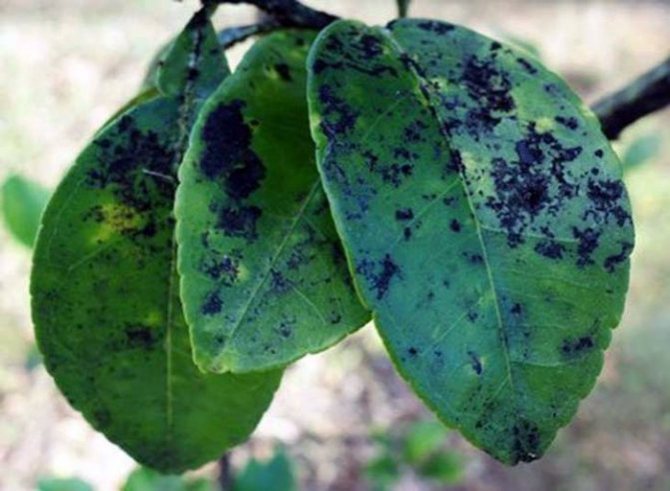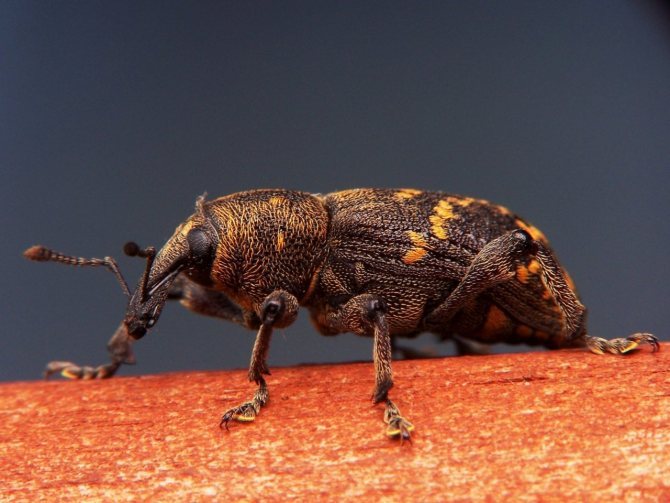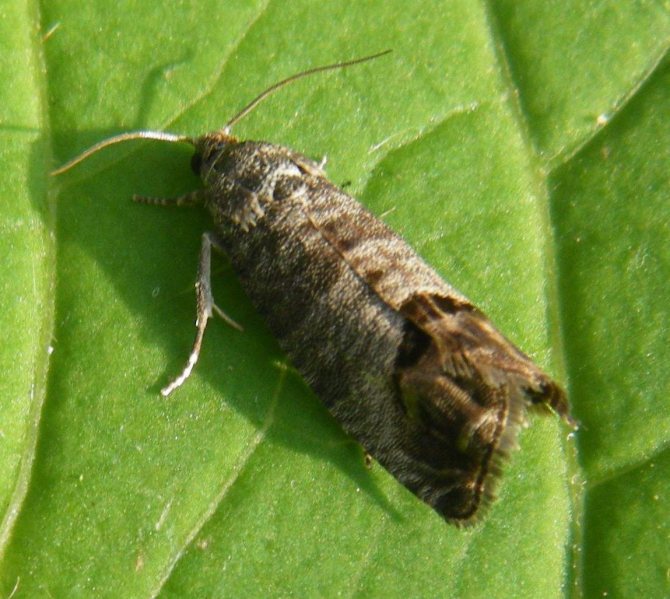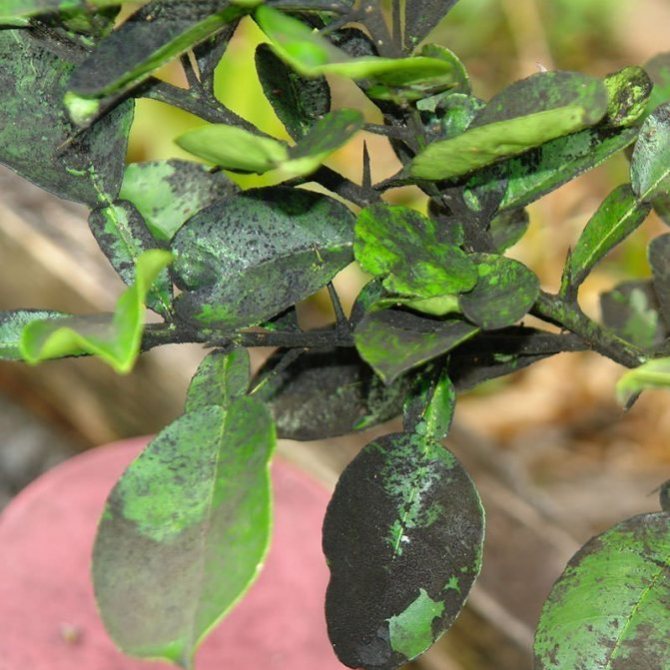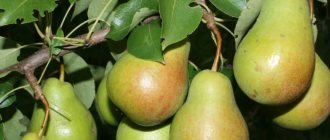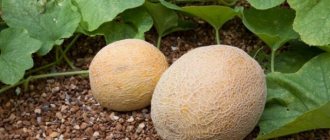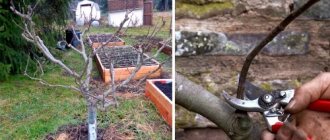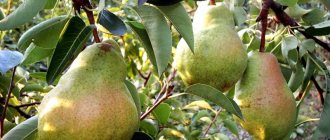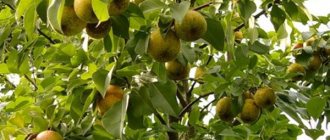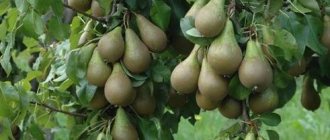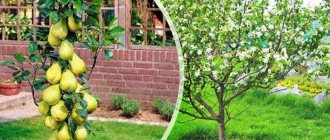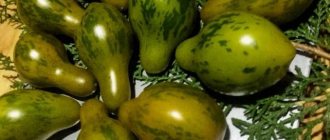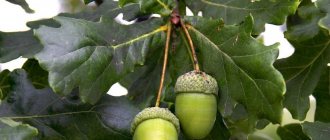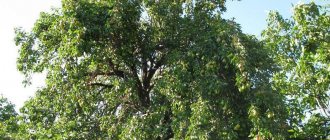Lada is a classic pear variety that takes root well in any gardens in our country. Due to the huge number of positive qualities, this variety has won the fame of the most popular pear.
Lada is recognized as a summer variety, the ripening period is in mid-August. The average height of a pear is 2.5 m. The tree has a pronounced trunk. Its crown is of medium density, up to three years old it is funnel-shaped, and at the onset of the fruiting period it becomes pyramidal.
Description and history of the appearance of the pear variety Lada
Let's start with a description of the variety. The shoots of the pear are rather long, of medium thickness, slightly curved, in cross section - rounded, brown in color. Leaves are dark green in color, small in size. The length of the petiole is 1.5–2.5 cm; stipules fall off in the early stages.
The flowers are cupped. Each inflorescence contains 5–7 of them. Fruits are not very large, weighing 100-110 g, obovate. Their surface is smooth and shiny. The ripe pear has a yellow color with a pinkish tint on the sides.... The subcutaneous points are practically invisible. Lada's peduncle is short, there is no funnel. The flesh is whitish-yellow in color, grainy, of medium density and not particularly juicy. The fruit tastes sour-sweet without a pronounced aroma.
The Lada variety was bred by academicians Chizhov and Potapov. This pear is the result of crossing the varieties Olga and Lesnaya Krasavitsa. In 1993, the pear variety Lada was entered into the State Register for the Central, Central Black Earth and Middle Volga regions. Lada gained the greatest fame in the Moscow region.
How and when to plant
For planting, one-year and two-year-old seedlings grown in the nursery are used. If you are tempted to buy a more mature tree, it is better to know in advance that after three or more years of growing in one place, the pear of this variety simply will not take root during transplantation.
Such a tree will ache and wither, and even in the case of successful fruiting, its volume will be much less.
But how it is necessary to plant a Michurinskaya late pear, and what description of this variety exists, is indicated in the article at the link.
How to plant a seedling correctly:
- The optimal time for this is the beginning of spring. (Column-shaped pears are planted at the same time). In the fall, the seedling must be planted about a month before the cold snap, so that the plant has time to take root in a new place.
- The place for planting is chosen as illuminated as possible, slight shading is allowed, but the pear does not like a strong shadow.
- The distance to the next tree is at least three meters, fruit bushes are placed at a distance of one meter.
- With a high level of groundwater, it is necessary to consider a drainage layer or a drainage system.
- The site should be protected from a draft, and it is better to choose a place for a seedling on a small elevation in order to prevent decay of the root system.
- Pear prefers loam, grows slowly on clay and sandy soils... You can specially prepare the soil before planting by adding the required amount of fertilizer and peat to the hole (as for the Chizhovskaya pear).
- For one tree, it is necessary to add at least two buckets of humus to the bottom of the hole, 0.5 kg each of superphosphate and potassium complexes... If the soil is acidic, it is recommended to add about a glass of lime or crushed chalk.
- After that, the bottom is covered with a layer of earth of at least five centimeters so that the minerals do not burn the roots.... The seedling is set in a hole, the root shoots are spread in different directions, the planting site is covered with earth.
- It is recommended to install a wooden support next to the trunk in order to avoid further deformation of the plant.
- The bark neck of a pear should be two to three centimeters above ground level. The soil at the roots is compacted and a hole is made for irrigation.
It will also be interesting to know what the best pear varieties look like for the middle lane, as well as what they are called.
On the video - how to plant a pear correctly:
After planting, it is necessary to water the seedling well with water and leave it in a new place until final adaptation. Usually, if everything is done correctly, the pear will take root well and does not require additional conditions. The main points of further care are discussed below.
Advantages and disadvantages
Lada has many advantages, which include:
- early maturity - a pear for 2-4 years from the moment of budding brings a full harvest;
- winter hardiness - even young trees planted in the fall are able to overwinter without shelter;
- high resistance to most diseases - Lada is resistant to scab and fire blight.
Of the minuses of this variety, they note:
- short shelf life of fruits - only 55–65 days at 0 ° C;
- low transportability - pears do not have good transport resistance.
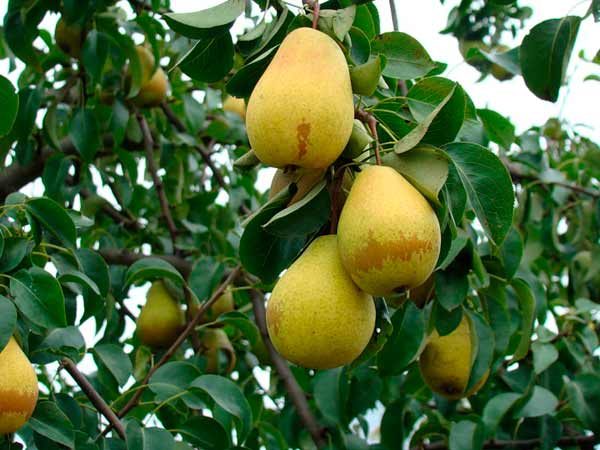
Juicy pears of the Lada variety on a branch
Top dressing
It is required to feed pear trees according to the following scheme:
- in early spring, fertilizers containing nitrogen are applied to the trunks; it is necessary for trees to actively build up the vegetative mass and shoots;
- during flowering and active development of ovaries, the pear is fed with potassium-phosphorus fertilizers;
- in summer, you can make foliar feeding of pears with a solution of boric acid;
- in the fall, in the process of preparing the tree for winter, a complex mineral fertilizer is introduced into the trunks.
Landing
When planting seedlings, the season is of no small importance. It is best to plant the pear in the spring. In autumn, this should not be done, due to the likely weak formation of roots in the autumn-winter season.
Nursery seedlings should not be more than 2 years old. Otherwise, root survival is significantly reduced.
Lada is not particularly demanding when choosing a soil, therefore it can grow almost anywhere. However, to increase yields, it is better to use drainage or black earth soil for planting.
The selected area is preliminarily dug up and fertilizers are applied: compost, potassium salt and superphosphate.
The dimensions of the recess for the seedling should be larger than the size of the rhizome, so that the tree is freely positioned when planting. In most cases, the depth is 70 cm and the diameter is 100 cm.
To create the correct crown shape, a peg is driven in near the plant, protruding from the ground by about 60 cm.
When the plants are immersed in the hole, they control that the root collar necessarily peeks out 5–7 cm, and the roots are carefully straightened and sprinkled with soil where the seedling was grown. At the last stage of planting, the soil near the pear is well compacted and watered, and a small amount of manure or humus is poured around the plant. At the end of all the actions, the tree trunk is carefully tied to the dug-in stake.
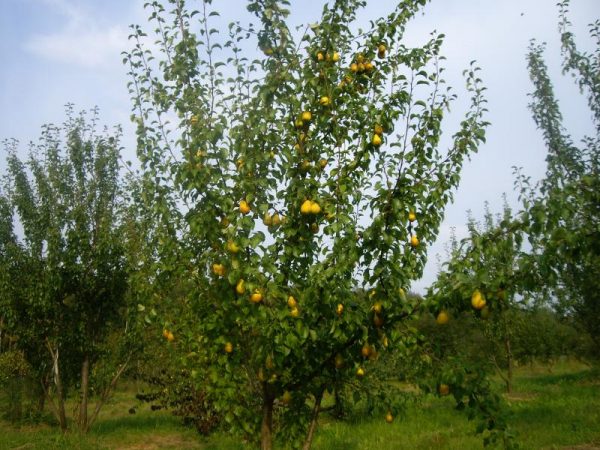

Fruit-bearing pear tree Lada
Origin of the variety
This variety is one of the most popular and widespread in summer cottages throughout the country. This is an early summer pear that was bred by the Moscow Academy of Agriculture. This variety came from crossing such popular varieties as Olga and Lesnaya Krasavitsa.
Varietal features of Lada
Lada has a number of its varietal characteristics.These include the following characteristics:
- high-yielding and early maturing culture;
- about 50 kg of fruit can be harvested from adult plants;
- pears are harvested when a golden color appears on them, this period falls mainly in September;
- the fruits of this variety are quite versatile - they are good for processing, homemade preparations and are used fresh;
- the culture is early-growing and already in the fourth year after planting in a permanent place bears the first fruits;
- pears do not tolerate transportation well and do not store for a long time;
- the variety is not prone to shedding, pears are well attached to the stalk;
- plant of medium thickening of the crown and height;
- the bark on the trunk is dark gray, the shoots of the plant are elongated brown, the leaves are oval, their surface is shiny, pointed, and their seamy side is matte;
- Lada's fruits are medium in size, about 100 g each, egg-shaped (in the opposite direction) with thin skin;
- the variety is self-fertile, but in order to increase the yield, it is recommended to plant such pear varieties as Kosmicheskaya, Rogneda, Otradnenskaya, Severyanka on the site with it;
- scab resistant;
- winter-hardy variety.
Selection of seedlings
- To plant Lada, you will need to purchase a seedling. The seedlings have a funnel-shaped crown, but do not worry, in the future it will go into a pyramidal crown. It is best to choose seedlings 1-2 years old. In seedlings older than two years, the roots do not take root well and acclimatize.
- The seedling must look healthy. It should not be mechanically damaged, damaged by diseases or pests, dried branches, leaves, roots or any distortions.
Landing place
- Lada trees prefer open, sunny areas. The plant can only tolerate light shading, its crown should be illuminated for at least 10 hours. For planting, the southern side of the site will be more suitable.
- Loamy soil is best suited for planting Lada. In heavy clay soils, the tree will lack air. If there is no choice, then the seedling can also be planted in sandy soil, but always with the addition of organic fertilizers or peat. It is best to choose areas with deep groundwater, if water stagnates at the planting site, then you will have to arrange drainage grooves to drain it.
Landing technology
- The self-fertility of the variety is a great advantage of this pear. This makes it possible to plant a plant in one copy and get a high yield of tasty fruits every year.
- It is necessary to plant seedlings of this variety in the spring. The landing site and the pits are prepared in advance - in the fall. Pits are dug 60 cm deep, and up to 100 cm in diameter. The excavated topsoil is mixed with fertilizers. To do this, take for each pit 0.7 kg of potash fertilizers, 1.5 kg of superphosphate and 60 kg of manure or humus. It is also recommended to add 2 cups of lime to each pit.
- A peg is driven in near the placement of the seedling, which will be at a height of 60 cm above the soil surface. At the bottom of the pit, a mound is formed from the top layer of soil with fertilizers. The mound should be high, its top should reach the edge of the soil, and between it and the walls there should be a depression of about 6 cm. A plant is placed on it, carefully leveling the roots.
- Sprinkle the roots with soil in which the seedling was or the top layer of soil. The plant is positioned so that the root collar is above the ground at a height of 6-7 cm. The pit is covered with the top layer of soil and tamped. The plant is watered abundantly. The near-trunk zone is covered with manure. The stem of the plant is tied to a peg.
Tree care. Watering
- Lada is watered only during drought. From frequent watering, the plant can rot its roots and develop diseases. The trees are watered abundantly, under each plant there are at least 1-2 buckets of water. In dry periods, the plant is watered 1-2 times a month. Trees must be watered during growth, which falls in June and during the ripening of the crop.
- The near-trunk zone is loosened after rain or watering. In the absence of rain in the fall, the same tree is watered abundantly. This technique will allow the roots of Lada to endure frost more easily.
Top dressing
- The young tree is not fed for the first three years after planting. Starting from the fourth year in spring, after the snow melts, the plant must be fed with nitrogen fertilizers. This should be done in dry weather. To do this, a couple of buckets of humus are introduced under each tree. The trunk of the plant is treated with lime.
- In the absence of organic fertilizers, the plant is fed with nitroammophos. The procedure is carried out in May. For this, the fertilizer is diluted with water in a ratio of 50 g of fertilizer per 10 liters. Three buckets of diluted fertilizer are poured under each plant.
- In autumn, Lada is fed with phosphorus-potassium fertilizers. To do this, take 15 g of potassium chloride and 35 g of superphosphate and dissolve in 1 bucket of water. Trees are watered at the rate of 10 liters of such a solution per 1 sq. M. Watering is carried out along the entire radius of the crown.
- Top dressing of trees of this variety is carried out once every two to three years.
Pruning
Plants are pruned in early spring or late autumn. In the first year and in the next four, the crown is thinned out at the tree for its correct formation. During sanitary pruning, all dry, broken, damaged branches with signs of disease are removed. Strongly long branches should be shortened. Places of large cuts are treated with garden putty.
It is necessary to ensure that in winter there is no snow adhesion on the branches of the Lada. They break easily from this.
Protection against diseases and pests
- Lada is resistant to scab damage. The fight against other diseases and pests begins in early spring before the sap begins to move in the tree. To do this, 700 g of urea must be diluted in 10 liters of water and this solution is used to treat the plant stem and the soil of the near-stem zone. In no case should the buds of the plant be treated with this solution. This technique will destroy hibernating pests.
- To combat diseases, the plant is sprayed with fungicides three times during the growing season. In the fall, it is important to remove all fallen leaves and dried leaves that remain on the tree, pests and diseases hibernate in them.
Harvesting
- This variety bears fruit annually. Pears can hang on the tree for a long time without crumbling. When harvesting, pears must not be shaken off, the skin is damaged on them, and they are not stored at all.
- Lada pears are poorly transported. When laying, they are shifted with sawdust or paper. You can store the crop in clean, dry rooms at a temperature not exceeding 0 degrees Celsius. In this case, pears are stored for no more than 2 months.
- Lada is distinguished by its high winter hardiness, therefore, it does not require special preparation for winter. For the winter, the plant does not need to be covered. Cover only young seedlings.
Care
The pear is often watered only during periods of prolonged drought, since very frequent watering damages the root system and provokes all kinds of diseases of this variety. The plant may even completely die due to excess moisture. Watering is carried out abundantly, 2-3 buckets of water under one tree. Also, moisture in the pear is needed at the beginning of summer, when the fruits are poured.
In early spring, the tree is fed with nitrogen fertilizers. They do this when the snow melts and dry weather sets in.
Pear Lada loves good lighting, but not heat. In case of too much sunlight, young leaves may dry out.
Dried and damaged branches that appear after winter are cut off. The stem part of the tree trunk is usually treated with iron red lead or lime.
In the autumn, mineral fertilizers are used. They are added in October. In winter, the pear also needs proper care. It is necessary to ensure that during warming, wet snow does not adhere to the branches of the tree. The weight of the snow layer can easily break thin twigs. The stem is not covered, since the pear is highly frost-resistant.
In the first year of fruit appearance, excess young ovaries must be thinned out to create the correct crown of the plant.
Lada pears are pruned twice a year: in spring and autumn. Unnecessary branches are cut, very long ones are made shorter with a sharp pruner so as not to cause a lot of damage to the fruit plant. Then the places of the cuts are treated with garden putty.
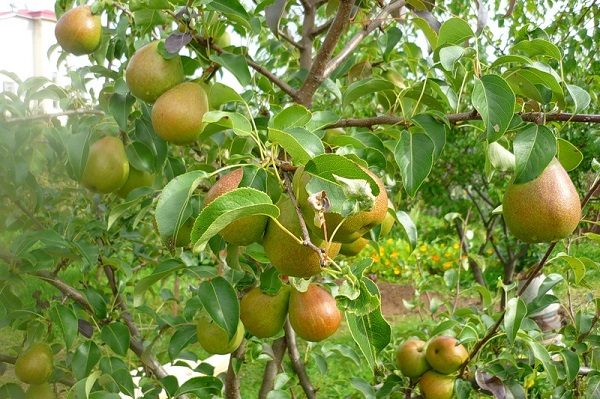

Productivity in an adult tree of the Lada variety
Pests and diseases
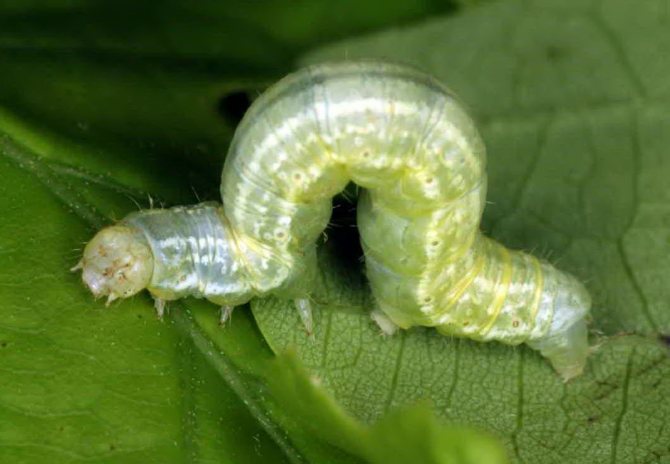

For the most part, this variety is not susceptible to any diseases and is sufficiently resistant to pests. But still, with improper care, some problems may arise.
The main pests are:
- Winter moth (gray butterfly about 1 cm, yellow-green larvae). A sign and appearance is a thin cobweb on the leaves and their skeleton. Getting rid of them is possible with the help of Cyanox, Zolon, Nitrafen, etc., which are used according to the instructions. For prevention, it is necessary to dig up the soil in the fall, collect caterpillars, whitewash the tree trunk and remove moss.
- The pear sawfly is a weaver (an insect with a red belly and a black head, and orange larvae). Signs of their appearance - the leaves become irregular and covered with cobwebs with caterpillars. Drugs to combat them - Karbofos, Gardona, Actellik, Phosphamide. Preventive measures include digging up the soil, as well as collecting nests from the cobweb, in which the larvae are located.
- Flower beetle (a brown insect that lays eggs in still unblown buds). Signs are the presence of a large number of buds that have not bloomed, as well as small holes in them with released juice. Suitable drugs - Corsair, Actellic, Metaphos, etc. Preventive measures include digging up the soil in the fall, and collecting and burning dry foliage.
Diseases that can affect the pear Lada:
- pome fruit rot is a fungus. It affects fruits that are stained, change in taste, may not fall off and mummify on a tree, causing the spread of the disease. Copper sulfate, Oleocobrite, Horus, Phtalan, etc. help. Prevention necessarily includes the collection and disposal of affected fruits, as well as the treatment with Bordeaux liquid (4%) of the entire tree before the budding period.
- rust is also a fungus. It affects the leaves, which are covered with brown spots and growths, which leads to their premature fall. Preparations for struggle - Bordeaux liquid in a concentration of 1%, Nitrafen. Prevention will be the collection and burning of dry leaves, to prevent the spread of the disease, digging and loosening the soil, processing until the buds mature with Bordeaux liquid 4% and other means.
- false tinder fungus is a fungus. It infects the trunk of a tree, causing white rot on it and woody growths of yellow or brown color. The mushroom must be cut from the surface, the cut site must be treated with copper sulfate and garden pitch. Whitewashing is necessary in the fall, as well as protect the tree from damage to the bark.
- cytosporosis is a fungus that infects the bark, which leads to the death of this part of the tree. The treatment will be to remove damaged areas of a tree or bark, and treat them with copper sulfate. To prevent this disease, it is necessary to whitewash trees in the fall, after pruning, process them with vitriol.
Ripening and harvesting
Lada is a fast-growing variety of the early ripening period. With proper care and regular pruning, fruits appear 3-4 years after planting. The first pears are harvested in early August, and the main harvest falls in the second half of this month. A mature tree produces about 50 kg of fruit annually.
Pears are firmly attached to the stalk and fall off only when fully ripe.Thanks to this, it is possible to harvest in mid-September, when the pear fruits become amber-golden in color and blush appears.
The storage conditions for pears are as follows: darkened room, positive temperature 1–4 ° C, humidity - not less than 85% and good ventilation. Fruits are neatly placed in plastic boxes or wooden boxes. Spread the fruits in a selected container in layers, which are separated with thin clean paper or dry straw. Do not create more than two layers.
Lada pears are stored for 2–2.5 months. In addition, pears can be kept in the sand. When stacked in wooden boxes, sand the layers of fruit. Thus, the fruits can last until November.
Gardeners reviews
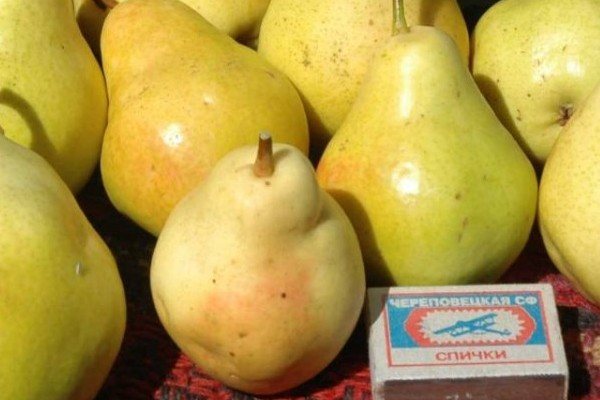

Stanislav, Oryol region
Pear Lada was very sick after landing. In the early years, there was a bacterial burn, but then the tree took off and pleased with fragrant fruits, a real pear taste.
Olga, Ulyanovsk region
Pear Lada gave a crop for the third year already. The fruits were even, light yellow with a beautiful blush, hanging on the branches until they start to rot. It is easy to collect from a small tree, but accessories are needed to collect from an adult. Children fell in love with pears, they willingly eat most of the harvest.
Valentina, Belgorod region
We were looking for Lada saplings, because, according to reviews, a very early variety. When planted, the seedling in the first year was very moody. Gave little growth, the leaf was small. But after the third year he took up well and has almost reached two meters. The harvest was small, pleased, the first fruit was taken on August 4. Very juicy pulp with a pleasant taste. Recommended!
Alexandra, Moscow region
In the Moscow gardens, Lada is very common. It has been growing on our site for over 10 years. The harvest was small, no more than 2-3 buckets, but after the neighbors planted Skorospelka on their plot, our harvest grew. We now collect at least 7 buckets every year.
Alexander, Irkutsk region
Pear Lada showed good winter hardiness at minus 28o C. A five-year-old tree was wrapped in thick paper with a bole. The buds are well preserved, the yield was 24 kg. I didn’t get sick in the summer, the leaf was shiny. We fight against thickening of the crown with strong spring pruning. Pears are very aromatic, reminiscent of the aroma of duchess. They were stored in the refrigerator for 2 months, but they were removed from a branch slightly unripe.
What are the disadvantages of the variety?
We recommend reading our other articles
- Tomato variety Wonder of the earth
- How to choose a sheep clipper
- Cucumber variety Far East 27
- Pear variety Vidnaya
Storage of pears "Lada"
The advantages described above speak only in favor of the variety, but it also has disadvantages.
- The fruits of the Lada pear are very difficult to transport, especially over long distances. On the way, they quickly crumple, lose their marketable qualities. The reason for this is the thin skin and soft, albeit grainy, flesh. Therefore, they are not particularly suitable for sale. This product is recommended for sale only in local, nearby markets.
- Low drought resistance, the variety needs regular watering, especially in hot summers.
- The fruits of the Lada variety are stored for only 2 months, and this is under certain conditions! If you just put them in the refrigerator or on the table, then after a week they may disappear.
- Despite the fact that the Lada pear is a self-fertile variety, you can get the maximum yield only if it is grown near Severyanka, Rogneda, Kosmicheskaya or Chizhovskaya pears.

